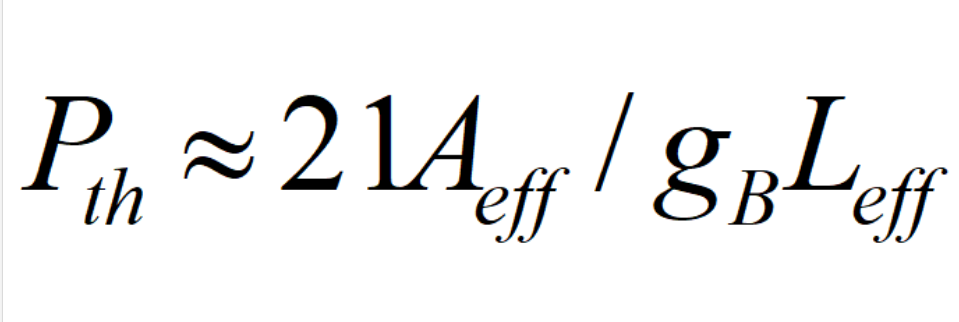When L is long enough, Leff ≈ 1/a, and Aeff can be replaced by πw2, where w is the mode field radius:

When the peak gain gB≈5x10-11m/W, Pth can be as low as 1mW, especially at the lowest loss of 1550nm, which will greatly limit the injection power of the lightwave system. However, the above estimation ignores the spectral width effect related to the incident light, and the threshold power can increase to 10mW or higher in a typical system.
The gain bandwidth of stimulated Brillouin scattering is narrow (about 10GHz), which indicates that the SBS effect is limited to a single wavelength channel of the WDM system. The threshold power is related to the line width of the light source. The narrower the line width of the light source, the lower the threshold power.
Usually, we have the following methods to reduce the impact of SBS on the system:
Reduce fiber input power (reduce relay interval);
Increase light source linewidth (dispersion limitation);
In general, SBS is a harmful factor in optical fiber communication systems and should be minimized. However, because it can amplify the light field by transferring the energy of the pump field with a suitable wavelength to a light field of another wavelength, it can be used to make Brillouin amplifiers. However, due to its narrow gain spectrum, the bandwidth of the amplifier is also very narrow.



